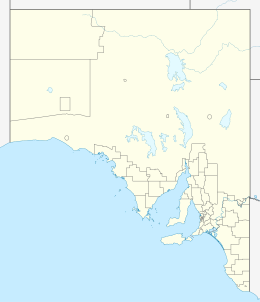Smith Island (South Australia)
| Geography | |
|---|---|
| Location | Spencer Gulf |
| Coordinates | 34°58′59″S 136°01′44″E / 34.983°S 136.029°ECoordinates: 34°58′59″S 136°01′44″E / 34.983°S 136.029°E |
| Administration | |
|
Australia
|
|
Smith Island is an island located in Spencer Gulf off the east coast of Jussieu Peninsula on Eyre Peninsula in South Australia approximately 32 km (20 mi) south-east of Port Lincoln. It was named by Matthew Flinders in memory of William Smith who was one of the eight crew lost from a cutter that capsized sometime after being launched from the HM Sloop Investigator to search for water on 21 February 1802. Since 2004, the island has been part of the Memory Cove Wilderness Protection Area.
Smith Island is approximately 32 km (20 mi) south-east of Port Lincoln, 2.8 km (1.7 mi) south of Lewis Island and 1.8 km (1.1 mi) east of Cape Catastrophe. The island has an area of 4 ha (9.9 acres) and a maximum height of 22 m (72 ft) above sea level. Access to the island is limited by the absence of a coastline sheltered from swells and tidal streams.
Smith Island was formed about 9100 years ago when sea levels rose at the start of the Holocene. The island consists of a granite outcrop rising from the seabed to a flat-topped capping of calcarenite which is covered by ‘an unusually thick blanket of soil, thinning only to outcropping calcrete’ at the perimeter of the capping. Below the water’s surface, the island rises from a depth of 30 m (98 ft) within only 180 m (590 ft) of its west, south and east shorelines.
As of 1996, a total of 23 species have been identified. Most of this diversity is confined to the thinner soils at the perimeter of the calcarenite capping. The deeper soil was occupied by marsh saltbush with the deepest soils supporting grey saltbush.
...
Wikipedia

